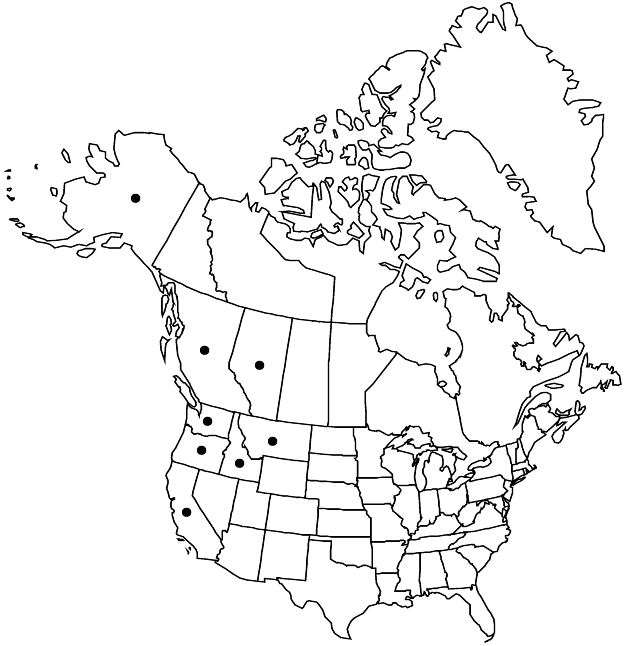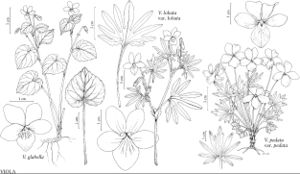Viola glabella
in J. Torrey and A. Gray, Fl. N. Amer. 1: 142. 1838.
Plants perennial, caulescent, not stoloniferous, 3–38 cm. Stems 1–3, erect or prostrate, leafless proximally, leafy distally, glabrous or finely puberulent, on caudex from fleshy rhizome. Leaves basal and cauline; basal: 0–4(–7); stipules ovate to obovate, margins entire, crenate, or serrate, usually glandular, apex acute to obtuse; petiole 7–27.5 cm, glabrous or puberulent; blade usually reniform to ovate, sometimes orbiculate, 3.3–8.5 × 2–9.3 cm, base cordate, margins crenate to serrate, ciliate or eciliate, apex acute to obtuse, mucronulate, surfaces glabrous or finely puberulent; cauline similar to basal except: usually restricted to distal ends of naked stems; stipules ovate to oblong, margins erose or subserrate, often glandular, apex acute to acuminate; petiole 0.2–2.9 cm, glabrous or finely puberulent; blade ovate to deltate, 1.4–5.7 × 0.8–4.7 cm, base cordate to truncate, margins crenate to ± serrate, ciliate (sometimes limited to proximal half), apex acute. Peduncles 2–8 cm, glabrous or pubescent. Flowers: sepals linear-lanceolate, margins eciliate, auricles 0.5–1 mm; petals deep lemon-yellow on both surfaces, lower 3 and sometimes upper 2 brownish purple-veined, lateral 2 bearded, lowest 6–18 mm, spur yellow to greenish, gibbous, 0.5–2 mm; style head bearded; cleistogamous flowers axillary. Capsules ovoid to ellipsoid, 7–13 mm, glabrous. Seeds light to dark brown, shiny, 2–2.2 mm. 2n = 24.
Phenology: Flowering Mar–Aug.
Habitat: Damp, wet, or shady places in forests, stream banks
Elevation: 0–2600 m
Distribution

Alta., B.C., Alaska, Calif., Idaho, Mont., Oreg., Wash., Asia.
Discussion
Viola glabella is similar in overall appearance to V. pubescens. The cauline leaves are sometimes described as appearing only near the apex of the stem (P. A. Munz 1959), but often a leaf occurs from a node on the stem below the apex.
Viola californica was described from collections made in Humboldt and Trinity counties, California, and may have arisen as a hybrid between V. glabella and V. lobata var. integrifolia. It is apparently limited to Abies concolor forests above 1520 m (M. S. Baker 1953). Study of V. californica is needed to determine if taxonomic recognition is warranted.
Selected References
None.
